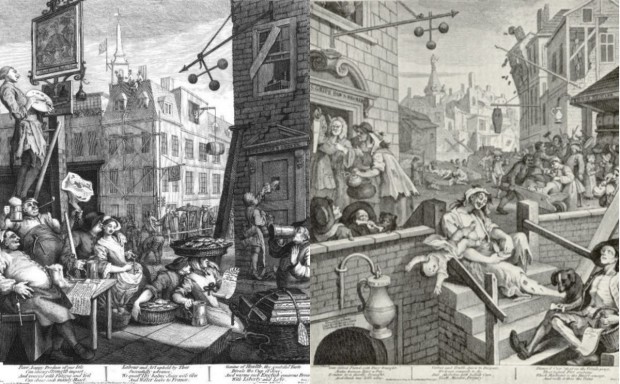“I can have one drink and stop. But I am teetotal for my brothers who cannot.”
– Joseph Livesey (1794 – 1884), Temperance campaigner and Politician
The Teetotal Temperance movement has been a largely overlooked social movement, but could be one of the most important in British history. As more and more spent their wages on alcohol in pubs after work, the state of welfare in the UK was falling to its knees. Pint after pint saw families tearing apart. As workers drank the money away and lost their jobs because of it, children were sent to workhouses. Domestic abuse was at an all time high and the conflict of drink and religion brought shame and misery to communities. The unhappiness that came with drinking to excess meant a change was on the cards.
The drinking of beer was first encouraged as a healthier alternative to the astonishing consumption of spirits. Before the Gin Act in 1736, the annual consumption of the spirit for one adult was totalling to nearly 88pints – that’s a pint and a half a week. Cheap beer was also seen as a safer alternative to the unsanitary, life-threatening water that was available. An alternative, however, leading to an extremely poor state of affairs.

Although there were an increasing number of temperance societies forming across the UK beforehand, the one that had most effect started in Preston in 1832. Seven men from the industrial town signed an official pledge to completely abstain from alcoholic beverages –
with local businessmen Joseph Livesey being the unofficial leader. The movement grew more and more popular with communities and by 1900 around 6million were abstaining.
Dr Annemarie McAllister from the University of Central Lancashire has been studying social and cultural history for the past 50 years. She is the author of the book Demon Drink? Temperance and the Working Class, and curated the Demon Drink exhibition at the People’s History Museum in Manchester. She says that although women’s position in society at the time meant that they were not at the forefront of the change, that doesn’t mean to say they were not fighting for it. From the Women’s Temperance Christian Union in the USA to the British Women’s Temperance Association in the UK, women were pushing forward for a revolution.
Dr McAllister talks about the notable women of the temperance movement and their campaigns, and whether temperance could fit in to today’s society.
LISTEN: The Women of Temperance

These iconic images from London artist, William Hogarth (1697 – 1764), depict social attitudes towards alcohol in the 18th Century. On the left, “Beer Street” is a stark contrast to “Gin Lane” on the right. Relaxed, creative thinkers after a hard day’s work compared to drunken disorder, poor parenting and chaos.
“Gin, cursed fiend, with fury fraught, makes human race a rrey. It enters by a deadly draught and steals our life away.”
– Rev James Townley, 1751
The post The women of temperance appeared first on Buzz.





